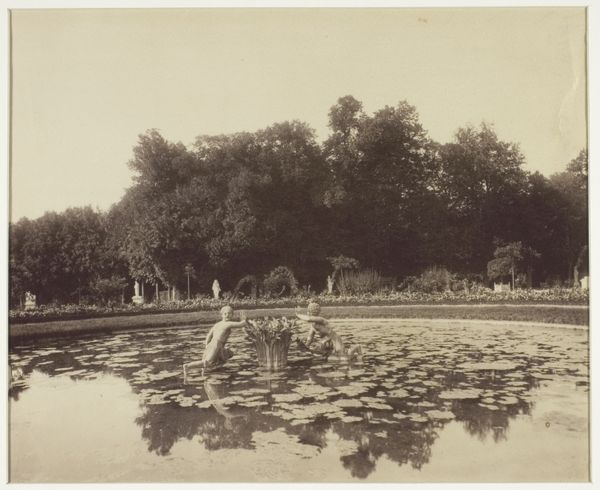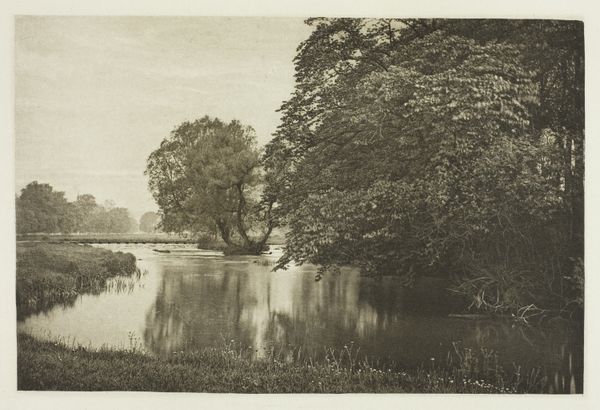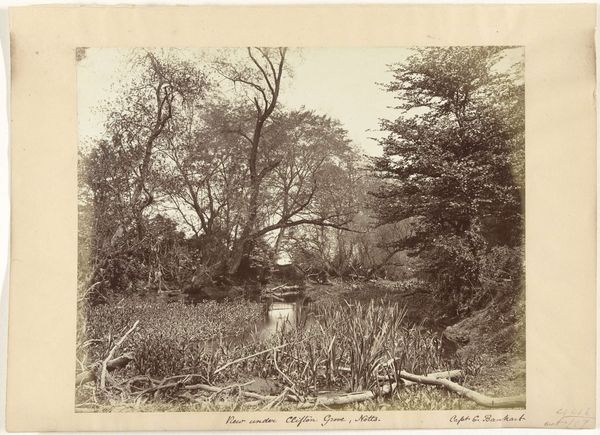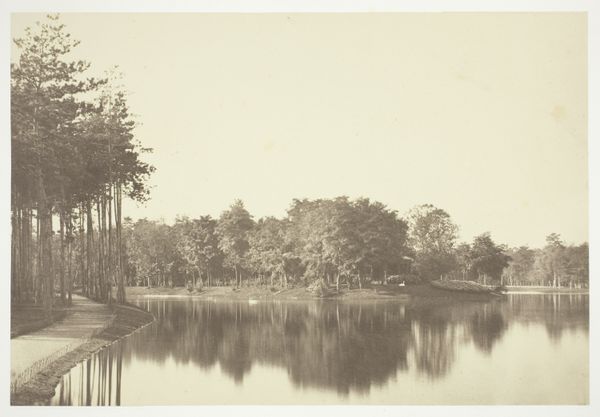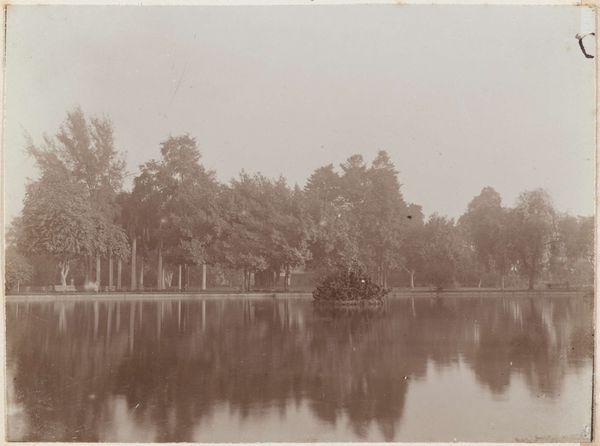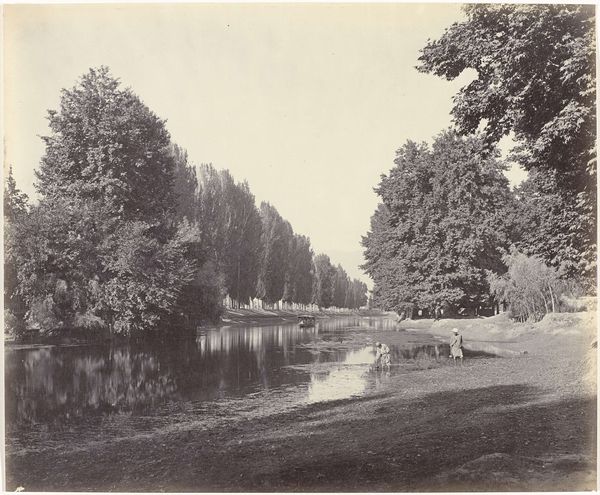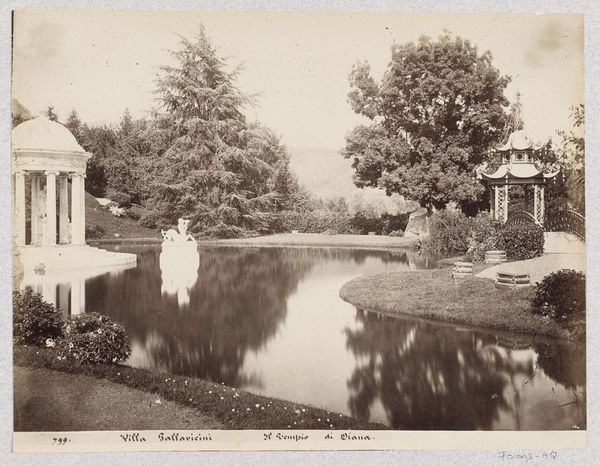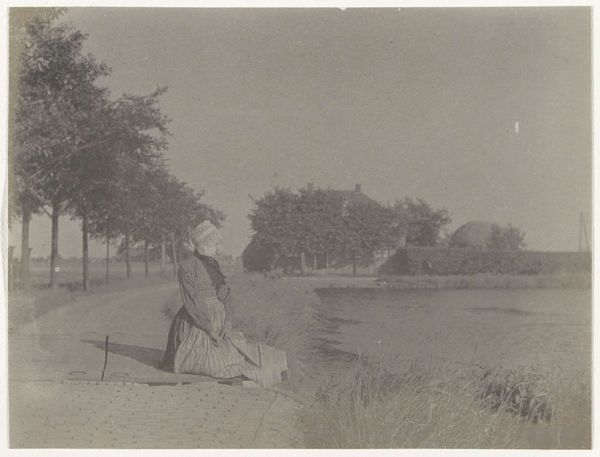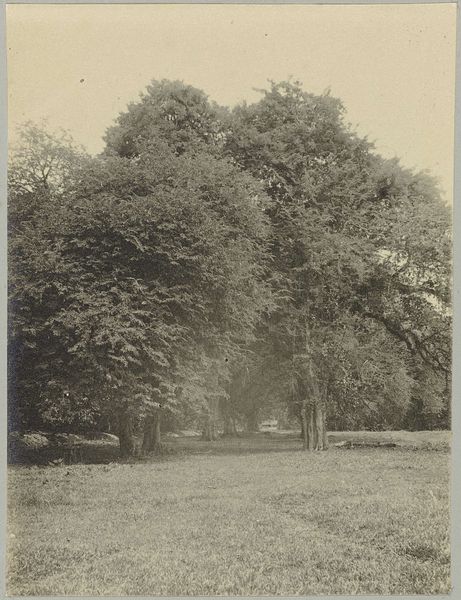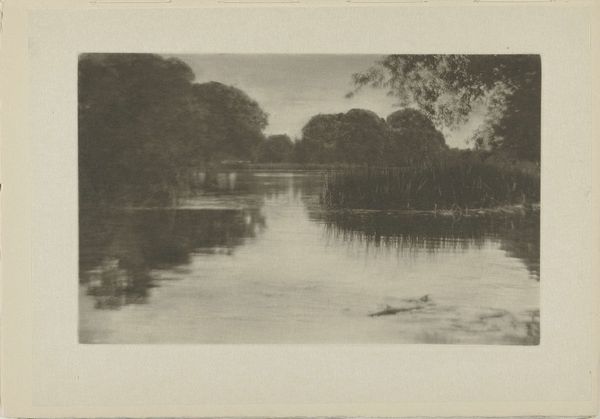
Kamferboom (Laurus camphora) in de tuin van Villa Pallavicini te Pegli c. 1870 - 1890
0:00
0:00
Dimensions: height 277 mm, width 215 mm
Copyright: Rijks Museum: Open Domain
Celestino Degoix made this albumen print of a camphor tree in the gardens of the Villa Pallavicini. As a photographic process, albumen printing involves coating paper with egg white and silver nitrate. This makes it sensitive to light, allowing an image to be printed from a negative. A sharp, detailed picture could be achieved on a smooth surface. But more than this, the albumen print was a product of its time. Photography exploded in the mid-19th century due to albumen printing, and it became popular for portraits, landscapes, and documentation. It rode a wave of industrial development. The demand for albumen actually led to mass production in egg white, with factories dedicated to separating whites from yolks on an industrial scale. This print, in other words, testifies to the growing interdependence of art, technology, and wider social and economic systems. Understanding the materials and methods used provides a window into the cultural and economic context of the artwork.
Comments
No comments
Be the first to comment and join the conversation on the ultimate creative platform.

